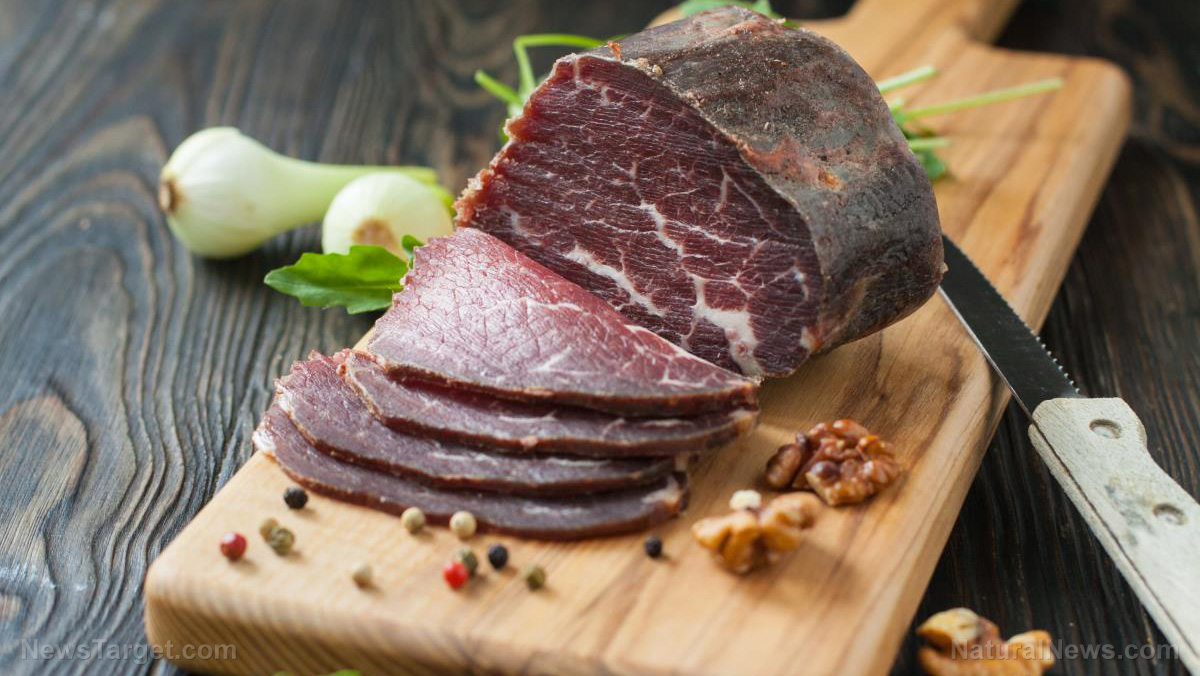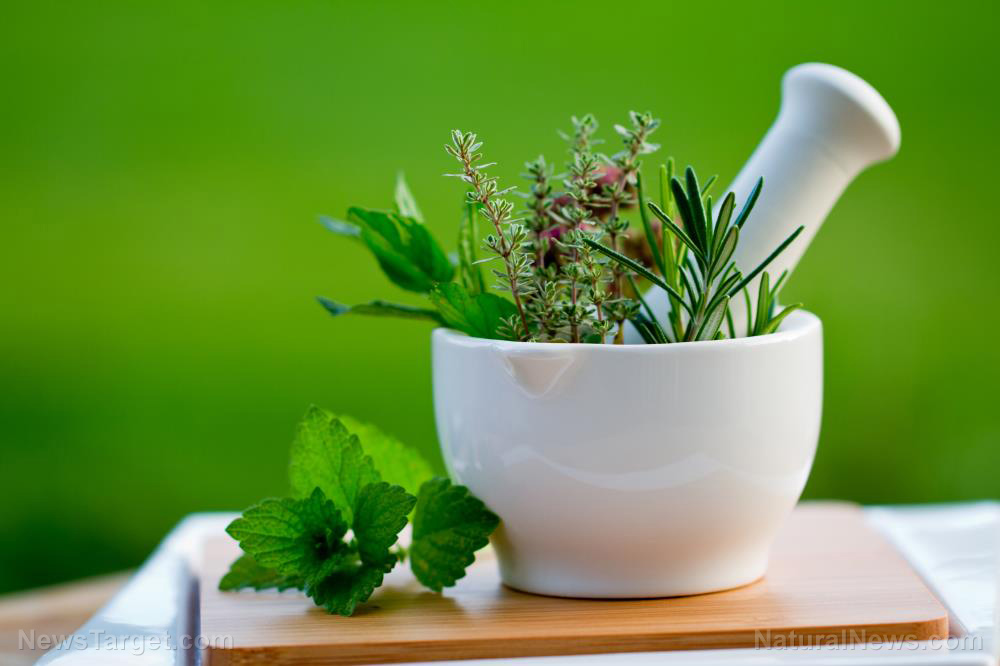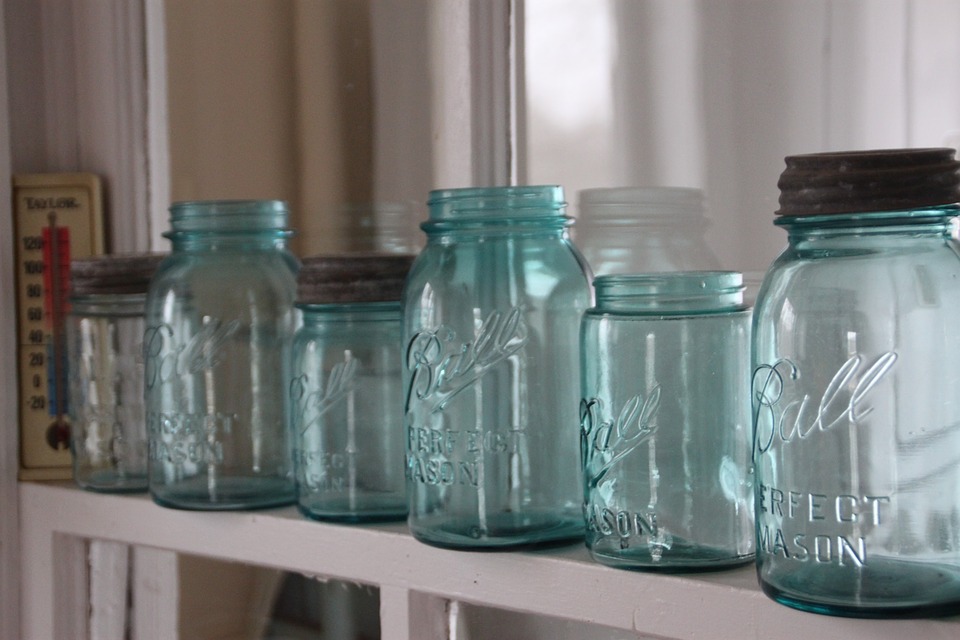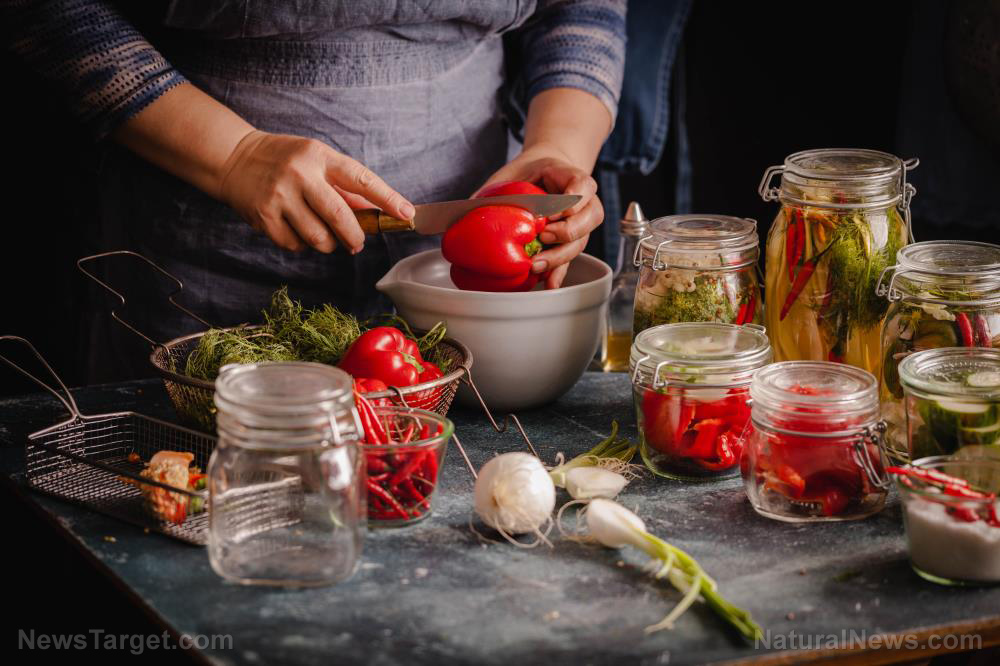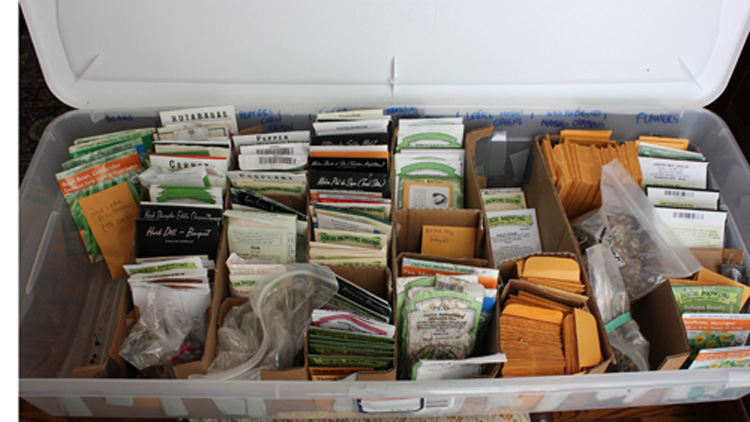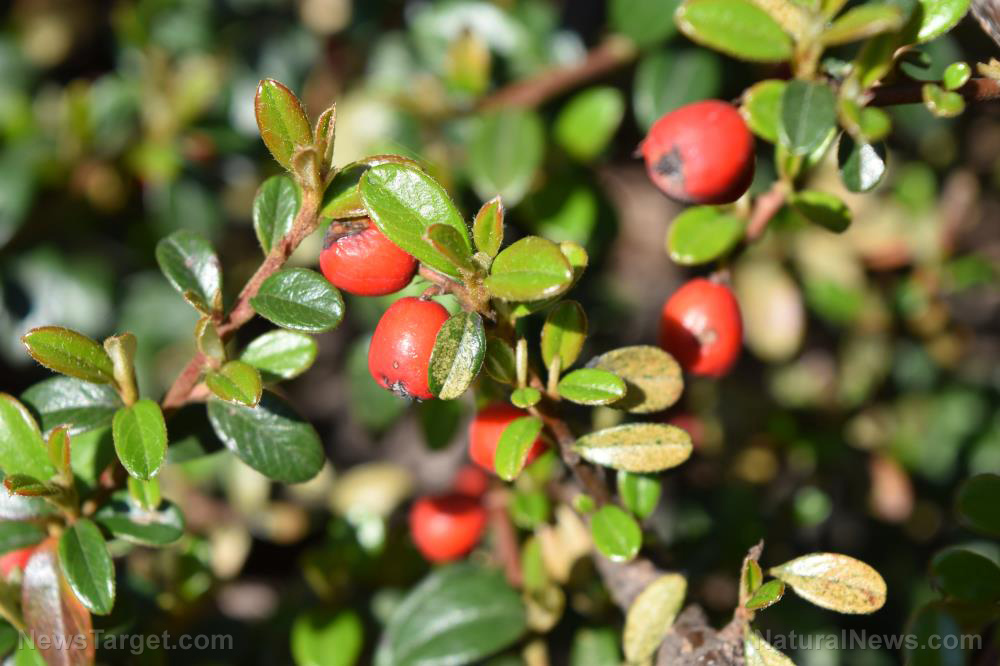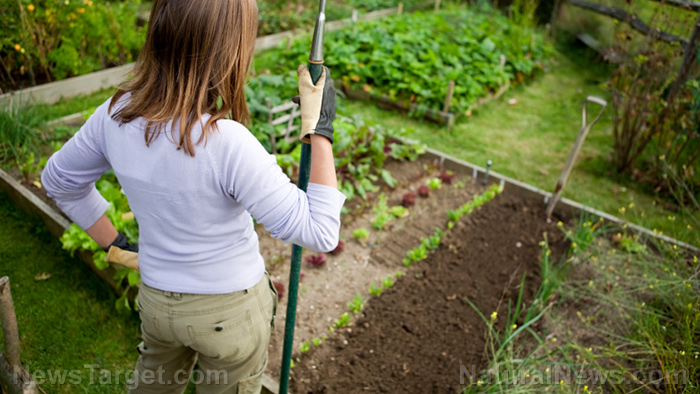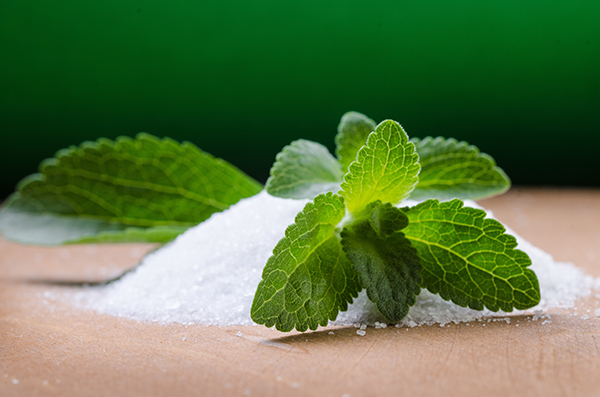Food supply tips: 7 Vegetables to grow for your food stockpile
04/19/2022 / By Zoey Sky

Growing vegetables in your home garden ensures that you have access to fresh food even after SHTF. If want to start a garden of your own, try growing vegetables like garlic, lettuce and spinach. (h/t to FoodStorageMoms.com)
Home gardening requires a bit of hard work, but your reward is fresh, delicious and GMO-free vegetables. If you harvest more food than your family can eat, you can preserve the vegetables to add more food to your survival stockpile.
If you don’t have a lot of space for a backyard garden, grow plants in pots or five-gallon buckets on your deck, patio or side yard. You can also grow vining crops that can be trained to grow vertically on support structures.
If there’s no space for gallon buckets in your house, grow herbs in a more compact windowsill garden.
To start your home garden, you will need the following supplies:
- Seeds
- Gardening gloves
- Garden soil (Check with your neighborhood garden store to choose the right soil amendments for your location.)
- Worm castings
- A good watering system
- Quality organic fertilizer
Garlic
To grow garlic, you need good soil with a pH level between 6.5 and 7.0 and good drainage. Seed garlic can be a little expensive, but after the first investment, you can save some of the larger bulbs for seed the next year.
Plant before the first frost since garlic lies dormant over the winter and grows in the spring. Plant cloves two inches down and five inches apart.
Cover the garlic with five inches of straw and leave the straw on it in the spring. If you have a drought, the straw will help keep moisture in the soil. It will also help reduce weeds.
Dig up the garlic carefully during the last week of June. If a forecast says lots of rain is coming, dig garlic up right before the rain starts.
Sitting in water destroys the outer skins of garlic and makes it hard to dig them up.
Green beans
Green beans will thrive in composted rich soil with a pH level between 6.0 to 6.2 and well-rotted manure. Plant the seeds one to two inches deep and cover them with soil. Space the seeds in rows about six to eight inches apart.
Water the seeds immediately and regularly until they begin to sprout. After the seeds begin sprouting, they need one to 1.5 inches of water each week.
The seeds require full sun, so plan accordingly where you’ll plant them. Green beans grow best when the air temperature is between 65 to 85 degrees.
Green beans are ready for harvesting when they are the size of a pencil. They can toughen up very quickly, so check on them regularly.
Pick green beans by snapping them off at the vine. If you can stagger the plantings every two weeks or so, you can harvest green beans for weeks instead of all at once.
Lettuce
Lettuce is one of the easiest vegetables to grow. You can grow lettuce in pots, raised garden beds, or five-gallon buckets with holes drilled in the bottom to drain excess water. (Related: Work smarter, not harder: 6 Home gardening hacks to try.)
Romaine lettuce has a great flavor, and grows in large, full-bodied heads with leaves that are mild and sweet. This kind of lettuce grows about 10 inches tall.
Romaine lettuce germinates for seven to 14 days and is ready to harvest after 80 days. Sow the seeds thinly in the soil in rows one foot apart and plant 18 inches apart.
Romaine lettuce prefers a temperature of about 40 to 80 degrees. This variety prefers a pH level of 6.5 to 7.5.
Don’t plant romaine lettuce in acidic soil. Like other varieties, it prefers well-rotted manure and soil that is well-fertilized with high nitrogen fertilizer (10-8-4).
Plant romaine lettuce in early spring or late fall for the best harvest.
Onions
Wait until around March or April to plant onions, when the ground is warm and it’s not too cold. Plant onions in a location that has full sun.
Don’t shade onions with other plants. This means onions need their own space and shouldn’t be crowded with other plants.
Onions are a leaf crop so don’t bury them more than one inch under the soil. After you’ve planted them an inch deep, there are some things you can do to help them grow.
To grow big bulbs, fertilize the onions. Once the bulbs start getting bigger, you should stop fertilizing.
Onions from seeds need plenty of water. They need one inch of water a week.
Spinach
Grow spinach from seeds for best results. Plant the seeds about four to six weeks after the last frost in the spring.
If you plant some seeds every two weeks you will have spinach for weeks or even months. If you spread too many seeds when planting, thin the spinach seedlings. They need about 12 inches between each row.
Spinach prefers temperatures between 35 to 75 degrees. Once the weather grows warmer, planting days are over until late August or early September.
Start a new batch every two weeks. Spinach will grow well in full sun or partial shade. Seeds should mature within 40 days.
Tomatoes
The tomato variety you plant depends on how you plan to use the tomatoes. You will need a different kind for sandwiches and pasta sauce or salsa.
Seedlings need the temperatures to be 70 F during the day and 40 F at night. Once the seedlings grow up to four inches tall, transplant them into larger containers.
Plant tomatoes deeper than other vegetables. Tomatoes do best when they have at least 18 inches for root growth.
Sweet tomatoes need at least eight hours of sunlight each day and at least three to four months of warm, dry weather. Continue giving the tomatoes organic compost throughout the season. At night, tomatoes require temperatures between 55 to 75 F.
Squash/zucchini
Here’s the thing: All zucchini are squash, but not all squash are zucchini.
You can grow either summer squash or winter squash in your garden. Summer squash like crookneck squash, straight-neck squash and zucchini grow in hot weather and should be harvested before they reach maturity.
Winter squash like acorn squash, butternut squash, spaghetti squash and pumpkins need to be harvested in autumn after they reach maturity.
Plant the seeds in soil with a pH level of 5.5 to 6.8 that is at least 60 F.
Zucchini, meanwhile, needs full sun exposure. Plant zucchini in loamy soil rich in nutrients. Make sure the soil drains properly.
Plant the seeds in hills or clumps of two to three seeds one inch deep. Space the hills about two to three feet apart.
Thin the seedlings as needed to produce the strongest plants. Use a cloche to keep the plants warm during cool weather.
Mulch the plants to keep them moist and weed-free. When the first blooms appear, fertilize the plants.
Water zucchini deeply with at least one inch of water per week. The soil needs to be moist four inches down.
Plant crops like lettuce and onion in your home garden so you can harvest and stock up on nutritious vegetables even after SHTF.
Watch the video below for tips on how to harvest fall vegetables.
This video is from the Backyard Farming channel on Brighteon.com.
More related stories:
Home gardening: 3 Benefits of crop rotation.
Small space gardening: How to set up a sustainable food source on a balcony.
Home gardening tips: 8 Small space gardening options that won’t break the bank.
Sources include:
Submit a correction >>
Tagged Under:
crops, food freedom, food stockpile, food supply, green living, harvest, home gardening, homesteading, off grid, organics, preparedness, Preppers, prepping, prepping tips, survival, survival food, survival gardening, Survival Tips
This article may contain statements that reflect the opinion of the author
RECENT NEWS & ARTICLES
COPYRIGHT © 2017 GREEN LIVING NEWS

